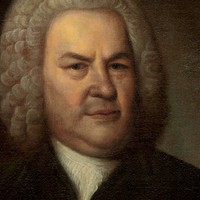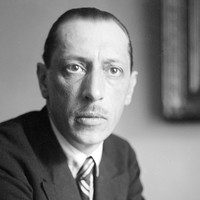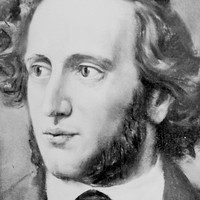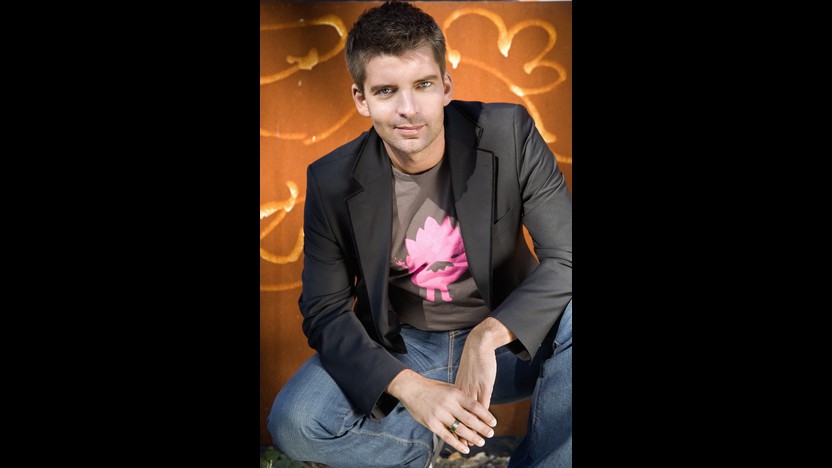Details

Johann Sebastian Bach
Orchestral Suite No. 2 in B Minor
From 1729 to 1741, Bach directed the Collegium Musicum in Leipzig, an ensemble of talented amateurs founded by Telemann during his student days. To fill the weekly programs at Zimmerman’s coffeehouse, Bach brought in his earlier instrumental music as well as pieces by other composers. He also contributed new secular repertoire occasionally, working around his primary duties to provide sacred music for weekly services at the Thomaskirche. Compositions that originated at the Collegium include the seminal keyboard concertos (recycled from older material) and the four orchestral suites. The second suite was actually composed last, in 1738 or 1739, and it may have been Bach’s final orchestral composition.
Each suite begins with a long Ouverture—borrowing a style developed by Jean-Baptiste Lully (1632-1687) in the court of King Louis XIV—before continuing through a series of shorter dance forms. Some of the dance styles favored by the French aristocracy grew out of local folk traditions, such as the bourrée and menuet; others introduced international flavors, for example the Polish-inspired polonaise and the sarabande from Spain’s Latin-American colonies. By Bach’s time, composers freely abstracted and stylized the forms, using them as suggestions for particular rhythms and moods without intending the music to be used for dancing.
The Suite No. 2 uses the smallest ensemble of Bach’s suites, with one flute, strings and basso continuo. The flute has a starring role, particularly in the Ouverture, the contrasting Double section of the Polonaise, and the final Badinerie. Much of Bach’s flute music was labeled flauto, which in his time indicated a vertical instrument, like the modern recorder. The suite, however, specifically calls for a flauto traverso or transverse flute, held sideways like today’s flutes. The flute part requires superb agility and breath control, and the Badinerie has become a favorite showpiece for flute virtuosos.
The substantial Ouverture begins in a broad tempo with the trademark dotted rhythms of the French style; it then moves to a faster fugal section before returning briefly to the opening material. For the next movement, the Rondeau indication suggests a certain pattern of how themes return, rather than a particular dance style for the music, which in this case mimics a gavotte dance with two strong upbeats. The Sarabande is refined and elegant, a civilized adaptation of the fast triple-meter dance first spread by Spanish guitarists. There are two related Bourrée movements, the second featuring flute over a sparser scoring, followed by a recap of the first. The Polonaise has a stern character driven by a walking bass line, while the intervening Double section strips down to a bare chamber music texture of flute and basso continuo. The short Menuet prepares the brisk finale, the Badinerie. This fairly uncommon heading does not match any particular dance; it simply indicates music of a playful, jesting character.
Aaron Grad ©2011

Igor Stravinsky
Suite from Pulcinella
After achieving international notoriety with The Rite of Spring, the ballet which garnered him a reputation for breaking artistic boundaries, Igor Stravinsky began composing in a more reserved neoclassical style. His first major neoclassical work was the ballet Pulcinella, which premiered in May 1920 at the Paris Opera. The suite you will hear today includes musical selections from the ballet and was first performed by the Boston Symphony Orchestra in 1922.
Stravinsky wrote:
“Pulcinella was my discovery of the past, the epiphany through which the whole of my late work became possible. It was a backward look, of course — the first of many love affairs in that direction — but it was a look in the mirror, too.”
Based on the eighteenth-century play Quatre Polichinelles semblables, the ballet Pulcinella was an artistic collaboration between Stravinsky (music), Pablo Picasso (stage design and costumes), Léonide Massine (choreography) and Sergei Diaghilev (impresario). Pulcinella is a stock comedic character who featured prominently in Neapolitan puppetry beginning in the 1620s. He is often portrayed as a cunning thief with very specific physical features, including a hunched back, a crooked nose, thin legs, a large belly, full cheeks, and a wide mouth. Pulcinella generally strives to rise above his social station, and he is often involved in schemes that save other characters.
Stravinsky’s ballet depicts a witty scene in which Pulcinella’s friends Florindo and Cloviello are unsuccessfully attempting to win the affections of Prudenza and Rosetta. Much to the chagrin of Pulcinella’s girlfriend Pimpinella, Rosetta coyly kisses Pulcinella. Meanwhile, Florindo and Cloviello are jealous of Pulcinella’s ability to have two women interested in him, and they beat him up and appear to stab him. The stabbing, however, is a farce intended to make Pimpinella forgive Pulcinella for his indiscretion. After Pulcinella is “resurrected” by another friend dressed as a magician, Pimpinella marries Pulcinella, and Florindo and Cloviello ride into the sunset with Prudenza and Rosetta.
Stravinsky’s score for Pulcinella borrowed musical elements from existing eighteenth-century compositions that were believed to have been composed by Giovanni Battista Pergolesi. Musicologists have since discovered that the music Stravinsky utilized was actually by several composers, including Pergolesi, Domenico Gallo, Carlo Ignazio Monza, Count Unico Wilhelm van Wassenaer and Alessandro Parisotti.
In some instances, Stravinsky merely borrows clusters of intervals, and in others, he uses entire melodic themes and harmonic progressions from the eighteenth-century sources. Stravinsky’s music for Pulcinella, therefore, is both pastiche and parody, and the work functions as a unique type of musical criticism. In his book The Stravinsky Legacy, Jonathan Cross aptly challenges the listener to question “whether what Stravinsky did [in Pulcinella] was mere critique…or whether he was able to make the material ‘transcend itself.’”
Paula Maust ©2022

Johann Sebastian Bach
Ricercare from The Musical Offering
In May 1747, Bach — already an elderly man by the measure of the day (he was 62) — visited the court of Frederick the Great, king of Prussia and employer of Bach’s son, the composer and keyboardist Carl Philipp Emanuel. At their meeting, Frederick presented Johann Sebastian with a theme intended to confound even his legendary skill as a contrapuntalist. Bach improvised a three-part fugue on the spot and, two months later, sent Frederick The Musical Offering, which includes the present astounding six-part fugue, one of the great masterpieces of counterpoint.
Nearly two centuries later — the year was 1935 — Anton von Webern received a commission from his publisher to arrange the Fugue for small orchestra. His orchestration emphasizes the adventurous harmonies of Bach’s fugue, using the different solo instruments to underline dissonances and other “modern” aspects of Bach’s writing. Of course, the orchestration also serves to elucidate Bach’s contrapuntal argument, throwing it into sharp and clear relief.
John Mangum ©2008
 Watch Video
Watch Video
Felix Mendelssohn
Symphony No. 4, Italian
After leaving stormy Scotland, which inspired the Hebrides Overture and the Symphony No. 3 (“Scottish”), the 20-year-old Mendelssohn continued his grand tour in Italy, sparking a symphony that, according to the composer, was “the jolliest piece I have ever done.”
Mendelssohn sketched part of that symphony while in Italy in 1830–31, and he completed the work in 1833, using it to fulfill a prestigious commission from the Philharmonic Society of London, the same group that had commissioned Ludwig van Beethoven’s Ninth Symphony. Mendelssohn made substantial revisions to the symphony’s final three movements in 1834, and he intended to revise the first movement, too, but he postponed that task and finally suppressed the symphony altogether. The work was published posthumously as the Symphony No. 4, although it was actually composed third. This performance restores the original conception of the 1833 version, using a critical edition prepared by the conductor Christopher Hogwood.
Mendelssohn’s bright impressions of Italy are borne out by the bouncing themes and running triplet pulse of the Allegro vivace movement that opens the symphony. Still, this is no mere musical “postcard” — just note the finely wrought development section, which shows the work of a composer equally fluent in Johann Sebastian Bach’s formal counterpoint and Beethoven’s obsessive manipulation of recurring themes. The Andante con moto may have been influenced by a religious processional Mendelssohn witnessed in Naples, an image that fits with the movement’s walking bass and grave harmonies.
The moderate pace and smooth flow of third movement resemble the symphonic minuets of Mozart and Haydn, as opposed to the more rambunctious scherzos popularized by Beethoven. In the contrasting trio section, the horns and bassoons indulge in spacious phrases that impart an outdoor quality, until the mood turns momentarily menacing with the interjection of trumpets, timpani, and a stern minor key.
For the symphony’s whirlwind finale, Mendelssohn borrowed lively rhythmic patterns from Italian folk dancing. He named the movement after the saltarello, a dance from central Italy defined by its fast triplet pulse and its leaping movements.
Aaron Grad ©2023
About This Program
Rich orchestral colors and textures abound in this program led by composer and conductor Matthias Pintscher, the newest Music Director of the distinguished French chamber orchestra Ensemble InterContemporain. The talents of SPCO flutist Julia Bogorad-Kogan are showcased in the elegant dances and flashy badinerie of Bach’s Orchestral Suite No. 2, which is followed by Stravinsky’s Neoclassical ballet suite from Pulcinella. Bach is revisited by way of Anton Webern’s pointillist interpretation of the Baroque master’s Ricercare from The Musical Offering, and the program concludes with Mendelssohn’s cherished Italian Symphony.
COMPOSER CONVERSATION SERIES
Composer and conductor Matthias Pintscher, featured on this program, will join us for a Composer Conversation at Amsterdam Bar and Hall in Saint Paul on Wendesday, January 15 at 7:00pm. Composer Conversation Series events are FREE but reservations are required. More at thespco.org/composer-conversation-series.
Contribute
SPCO concerts are made possible by audience contributions.
Newsletter
For exclusive discounts, behind-the-scenes info, and more:
Sign up for our email club!

